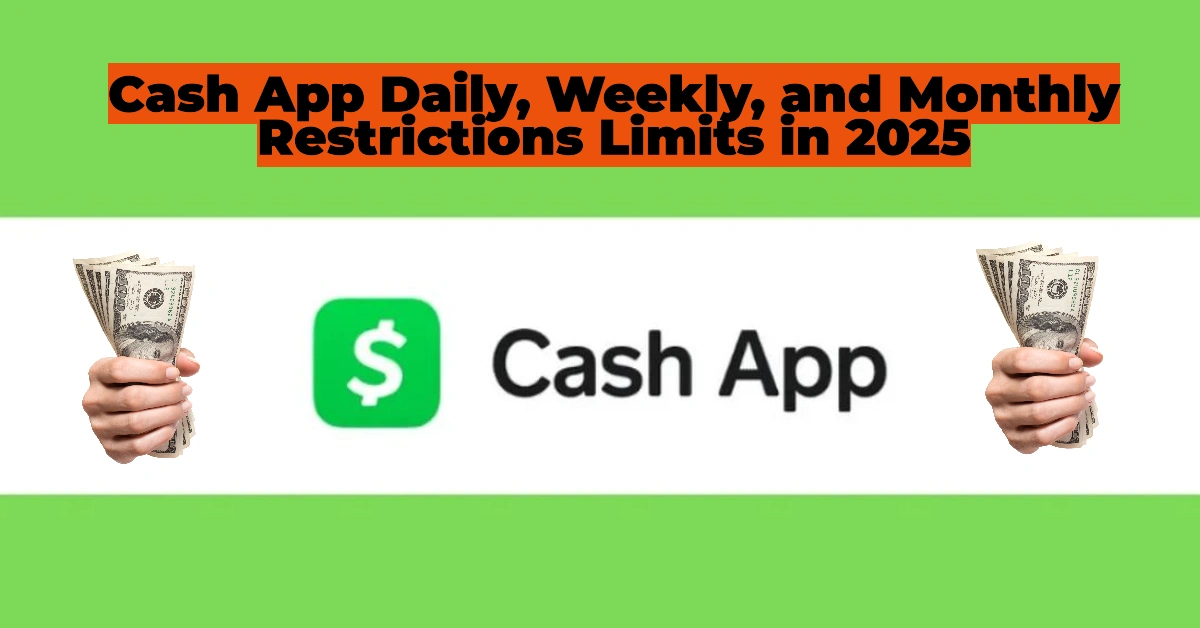Cash App is a widely used mobile payment service that enables users to send and receive money quickly and securely. This app allows for seamless transactions between peers and businesses, making it a preferred choice for digital payments. Additionally, Cash App offers features like direct deposit, Bitcoin trading, and the Cash Card for retail purchases.
Table of Contents
How Do Cash App Sending Limits Work?
Cash App imposes specific sending limits to protect users from fraudulent activities and maintain the integrity of its financial ecosystem. These limits apply to both verified and unverified users, with varying caps on daily, weekly, and monthly transactions.
Standard Cash App Sending Limits (Unverified Users)
For users who have not completed identity verification, Cash App enforces the following limits:
- $250 within a 7-day period
- $1,000 within a 30-day period
Increased Sending Limits for Verified Users
By verifying your identity, you can significantly increase your Cash App sending limits. Once verified, users can send up to:
- $7,500 per month
- No restrictions on the amount you can receive
Cash App Settlement 2025: Eligibility, Payout Per Person, and Everything You Need to Know
BCBS Settlement Payout 2025: When and How You’ll Get Your Payment
Americans Can Claim Up to $6,000 for Data Breach Settlement – Are You Eligible?
$16 Million Capital One Settlement: Are You Eligible for a Payment or Credit?
How to Increase Your Cash App Sending Limit
To raise your sending limit on Cash App, you must verify your identity. This process includes providing:
- Your full name
- Date of birth
- Last four digits of your Social Security Number (SSN)
- A government-issued photo ID (in some cases)
Once verified, your sending limit increases, allowing for higher transaction volumes.
Cash App Withdrawal Limits
Cash App also imposes limits on how much money users can withdraw from their accounts. The withdrawal limits are as follows:
- $1,000 per day
- $1,000 per week
- $1,000 per month
How to Withdraw Money from Cash App
Withdrawing money from Cash App is a simple process. Follow these steps:
- Open Cash App and go to the Money tab.
- Select Cash Out and enter the amount you want to withdraw.
- Choose whether to transfer funds to your linked bank account or debit card.
- Select the deposit speed (Standard or Instant) and confirm the transaction.
Get Paid! Verizon $100M Administrative Fees Class Action Settlement
$1,797 Direct Payments for Visa and Mastercard Settlement: Here’s What You Need to Know
What is a $Cashtag?
A $Cashtag is a unique identifier assigned to Cash App users, allowing them to receive payments without disclosing personal banking details. Users with a verified $Cashtag will see a blue checkmark next to their username, confirming their identity.
Frequently Asked Questions (FAQs)
How Much Money Can You Send on Cash App in One Day?
Cash App does not have a daily sending limit. However, unverified users can only send up to $250 in 7 days and $1,000 in 30 days. Verified users can send up to $7,500 per month.
How Do I Increase My Cash App Sending Limit to $7,500?
To increase your limit, complete the identity verification process by providing your full name, date of birth, SSN, and photo ID (if required).
Can I Send $5,000 Through Cash App?
Yes, you can send $5,000 in a single transaction if your Cash App account is verified. Otherwise, you must stay within the unverified user limits.
Conclusion
Cash App remains a convenient and secure method for sending and receiving money. While unverified users have lower limits, verifying your identity unlocks higher sending and withdrawal capacities. Additionally, creating a $Cashtag enhances transaction security, making it easier to receive payments without exposing sensitive information.
By understanding and optimizing Cash App sending limits, users can maximize their payment capabilities while maintaining security and efficiency.

5 thoughts on “Cash App Sending Limits in 2025: Daily, Weekly, and Monthly Restrictions Explained”